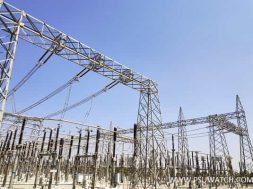
Audi E-Tron to Tata Nexon EV, Curious Case of Electric Cars in India
NEW DELHI: Tata Nexon EV recorded its best-ever performance in June, clocking over 600-unit sales. MG ZS EV and Hyundai Kona sitting above it are roughly at Rs 25 lakh-mark.
That’s the accessible electric four-wheeler market currently.
The next electric deal will cost you at least 4 times the above-mentioned cars. In this league are the luxurious, performance-oriented SUVs viz. Mercedes EQC, Jaguar I-PACE and the upcoming Audi e-tron.
The sales of Nexon EV in a month are cumulatively greater than all others. The volumes and popularity, as they stand out to be, are not so great. We discuss the premises of electric cars in India:
Challenges:
Price definitely is the single large deterrent to the growth.A base-trim of Tata Nexon EV will set you up by Rs 13.99 lakh (ex-showroom, Delhi), which is roughly Rs 6.80 lakh expensive over the corresponding petrol counterpart.
Drawing a comparison between an internal combustion power car and an electric isn’t completely fair. EVs ask for a higher one-time investment but are benefiting from a low cost of ownership/maintenance and running cost
Mercedes EQC and Jaguar I-PACE fetch tags well above Rs 1 crore and the upcoming Audi e-Tron will be no different. The prices of luxury electric cars will drop with localization, which seems highly unlikely in near future
Changing infra is inversely proportional to range. All these electric cars on sale offer a usable range between 225 and 375 kilometres against a single full charge.
While daily office commute and city runabouts are highly frugal thanks to low running cost (Rs 1-3/kilometre) venturing out for longer trips still requires greater planning.
According to MarketWatch, there are about 250 public charging stations currently in India. The government is aiming at setting up around 2,600 electric vehicle charging stations throughout the nation by 2023.
Outlook of the Indian market:
Let’s face it. The global rate of adoption of EVs is much faster than here with most carmakers planning to significantly shift from IC engines by 2025.
Korean duo Hyundai and Kia claim they’re ready with electric vehicles, however, don’t find the Indian market robust enough at the moment to make a profitable business case.
The largest carmaker Maruti Suzuki is tightlipped about its EV timeline. Electric WagonR and several mules have been caught testing on road.
Tata Motors and Mahindra have outlined their strategy. Tata Motors confirmed 10 electric vehicles across commercial and passenger vehicle businesses in India by 2025.
Similarly, Mahindra has announced Rs 3,000 capital expenditure to roll out a slew of EVs, starting 2023. Moreover, the company plans to bring two ‘born electric vehicles’ in 2025-26, which will be pure play EVs.
MG ZS EV was the first fully connected electric SUV launched in 2019. The SAIC-backed carmaker is also working on a low-cost electric, which it intends to introduce in 2022.
The necessary push:
The government has taken measures to promote renewable sources of energy and the manufacturing of electric vehicles through various policies and incentives. According to Niti Aayog, the Indian EV industry can add around $300 billion by 2030.
The Union government came up with FAME (Faster Adoption and Manufacturing of Electric and hybrid vehicles) in which EVs are incentivised in a demand-creation focus. Moreover, PLI (production-linked incentives), and scrapple policy will also contribute in the future.
States have also taken steps to devise EV policy. Gujarat, for example, offers subsidies ranging from Rs 20,000 to Rs 1,50,000 on the purchase of vehicles under this policy, which Karnataka, the first state to introduce an electric vehicle policy, gives 15% capital subsidy to investors in the electric vehicle (EV) sector on value of fixed assets over five equal annual payments, with maximum land covered being 50 acres.
It also gives a production-linked subsidy of 1% on turnover, which will be provided for a period of five years starting from the first year of commercial operations for large, mega, ultra, super mega EV assembly and manufacturing units.
















